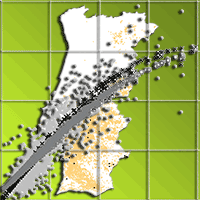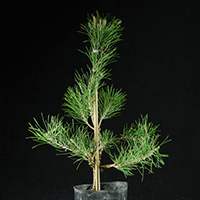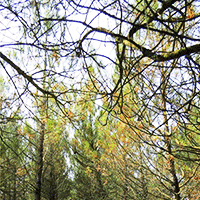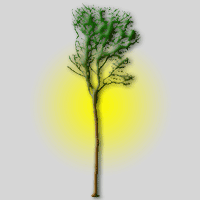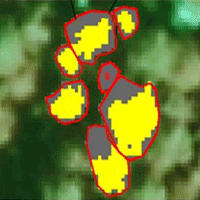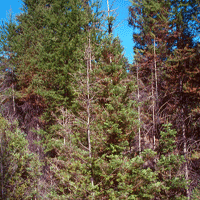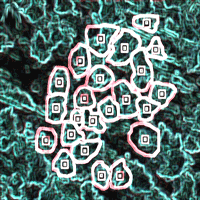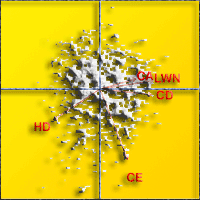
Estimating the mechanical stability of Pinus nigra Arn. using an alternative approach across several plantations in central Italy
iForest - Biogeosciences and Forestry, Volume 8, Issue 6, Pages 846-852 (2015)
doi: https://doi.org/10.3832/ifor1300-007
Published: Apr 08, 2015 - Copyright © 2015 SISEF
Research Articles
Abstract
Black pine has been used often in central and southern Italy to reforest mountainous areas depleted by the intensive use of natural resources. The main purpose of establishing pine forests in Italy was to protect the soil from excessive erosion, and also to facilitate the natural succession toward mixed forests with deciduous species. The most common silvicultural treatments in Europe currently aim at maximizing the stability of the stands and facilitating the transition from pure to mixed stands comprising a larger component of native tree species. In this work, we investigated the relationships between the living whorls number and four indexes of individual tree stability: the slenderness ratio, the crown depth, the crown projection, and an eccentricity index of the canopy. The data set used was composed of 1098 trees from ten black pine plantations located in central Italy. Our results demonstrate that the living whorls number can be handily used to predict the slenderness ratio with an error of 18%. A non-parametric model based on a reduced number of field measures was obtained as a support for thinning operations aimed at improving single tree stability.
Keywords
Black Pine, Tree Stability, Living Whorl Number, Slenderness Ratio, Crown Depth, Crown Projection, Crown Eccentricity
Authors’ Info
Authors’ address
Ugo Chiavetta
Consiglio per la Ricerca in Agricoltura e l’Analisi dell’Economia Agraria, Forestry Research Center, v.le Santa Margherita 80, I-52100 Arezzo (Italy)
Corresponding author
Paper Info
Citation
Cantiani P, Chiavetta U (2015). Estimating the mechanical stability of Pinus nigra Arn. using an alternative approach across several plantations in central Italy. iForest 8: 846-852. - doi: 10.3832/ifor1300-007
Academic Editor
Chris Eastaugh
Paper history
Received: Mar 26, 2014
Accepted: Oct 18, 2014
First online: Apr 08, 2015
Publication Date: Dec 01, 2015
Publication Time: 5.73 months
Copyright Information
© SISEF - The Italian Society of Silviculture and Forest Ecology 2015
Open Access
This article is distributed under the terms of the Creative Commons Attribution-Non Commercial 4.0 International (https://creativecommons.org/licenses/by-nc/4.0/), which permits unrestricted use, distribution, and reproduction in any medium, provided you give appropriate credit to the original author(s) and the source, provide a link to the Creative Commons license, and indicate if changes were made.
Web Metrics
Breakdown by View Type
Article Usage
Total Article Views: 50686
(from publication date up to now)
Breakdown by View Type
HTML Page Views: 42012
Abstract Page Views: 2913
PDF Downloads: 4046
Citation/Reference Downloads: 29
XML Downloads: 1686
Web Metrics
Days since publication: 3921
Overall contacts: 50686
Avg. contacts per week: 90.49
Citation Metrics
Article Citations
Article citations are based on data periodically collected from the Clarivate Web of Science web site
(last update: Mar 2025)
Total number of cites (since 2015): 21
Average cites per year: 1.91
Publication Metrics
by Dimensions ©
Articles citing this article
List of the papers citing this article based on CrossRef Cited-by.
References
Why the crop tree aligned thinning system (ZB-Df) increases the stability and productivity of stands. In: Proceedings of the “Development of Thinning Systems to Reduce Stand Damages. IUFRO Group S1.05-05” (Knutell H ed). Department of Operational Efficiency, Faculty of Forestry, Swedish University of Agricultural Sciences, Garpenberg, Sweden, pp. 35-42.
Gscholar
Effects of thinning intensities in experimental plots of Black European pine in “Foreste Casentinesi, Monte Falterona and Campigna National Park” (Tosco-Romagnolo Apennine, Italy), eight years after the felling. Forest@ - Journal of Silviculture and Forest Ecology (2): 73-83. [in Italian with English summary]
CrossRef | Gscholar
Pinus nigra Arnold. In: “Pines of Silvicultural Importance”. CABI Publishing, Wallingford, UK, pp. 266-286.
Gscholar
LOWESS: a program for smoothing scatterplots by robust locally weighted regression. American Statistician 35 (1): 54.
Gscholar
Stability of stands to wind. I. A theoretical approach. II. The practical viewpoint. Nederlands Bosbouwtijdschrift 47 (7-8): 179-193.
Gscholar
L’Inventario Nazionale delle Foreste e dei serbatoi forestali di Carbonio INFC 2005. Secondo inventario forestale nazionale italiano. Metodi e risultati [National Forest and Carbon sink Inventory INFC 2005. Second Italian national forest inventory. Methods and results]. Ministero delle Politiche Agricole, Alimentari e Forestali, Corpo Forestale dello Stato, Consiglio per la Ricerca e la Sperimentazione in Agricoltura, Unità di ricerca per il Monitoraggio e la Pianificazione Forestale, Edagricole-Il Sole 24 ore, Bologna, Italy, pp. 653. [in Italian]
Gscholar
Forest management tables (metric). Forestry Commission Booklet 34, HM Stationery Office, London, UK, pp. 201.
Gscholar
Reconversion of Norway spruce (Picea abies (L. ) Karst. ) stands into mixed forests: effects on soil properties and nutrient fluxes. In: Proceedings of the International Conference “Forest ecosystem restoration: ecological and economical impacts of restoration processes in secondary coniferous forests”. Vienna (Austria) 10-12 Apr 2000. Institute of Forest Growth Research, Vienna, Austria, pp. 119-125.
Online | Gscholar
Ohrozenie lesných porastov mechanicky pôsobiacimi abiotickými činitelmi [Abiotic factors threatening the mechanical stability of forest stands]. Lesnícky časopis (Forestry Journal) 45: 51-72. [in Slovak]
Gscholar
Conversion of pure pine and spruce forests into mixed forests in eastern Germany: some aspects of silvicultural strategy. In: “Management of Mixed-Species Forests: Silviculture and Economics (vol. 15)” (Olsthoorn AFM, Bartelink HH, Gardiner JJ, Pretzsch H, Hekhuis HJ, Franc A eds). IBN Scientific Contributions, Wageningen, The Netherlands, pp. 208-218.
Gscholar
Massnahmen zur Stabilisierung von Fichtenforsten gegenüber Schnee-und Sturmschàden [Measures to stabilize Norway spruce plantations towards wind and snow damages]. In: Proceedings of the “18th IUFRO Conference”. Ljubljana (Slovenia) 7-21 September 1986. Jugoslavenska Akademija Znanosti i Umjetnosti, Zagreb, Croatia, pp. 103. [in German]
Gscholar
Forest management. Academica, Pretoria, South Africa, pp. 151.
Gscholar

